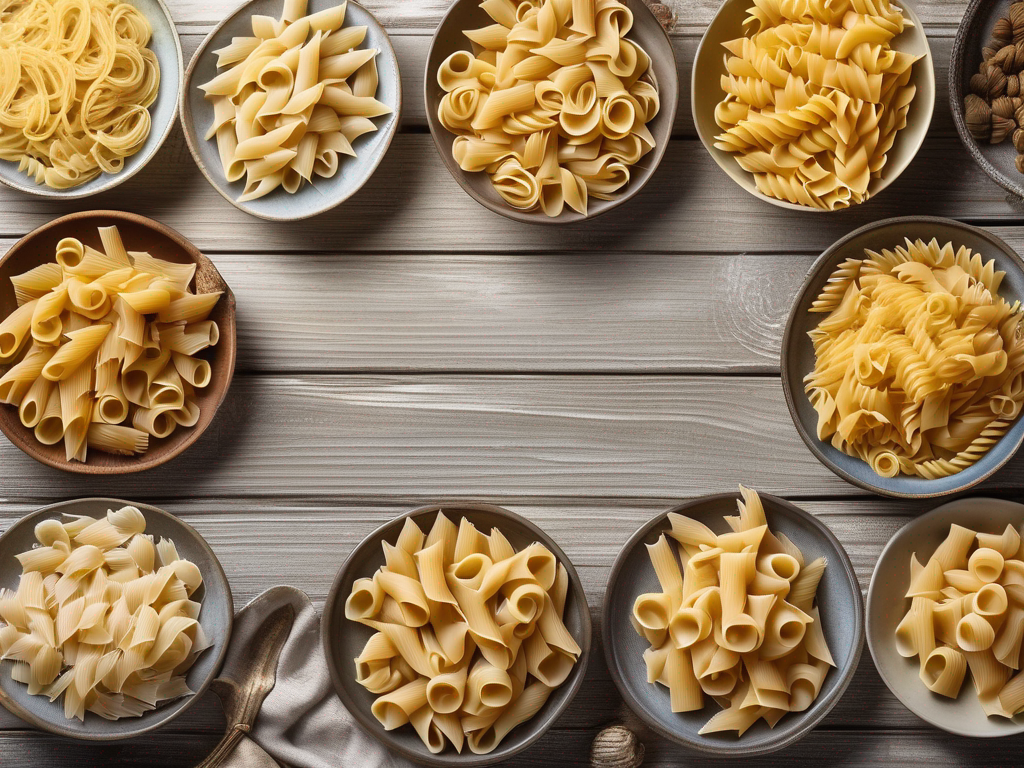
Is Your Dry Pasta Still Safe to Eat?
Get Your Free Food Safety Cheat Sheet
30 most common foods with instant answers. Print it and stick it on your fridge—completely free!
Is Your Dry Pasta Still Safe to Eat?
Dry pasta is a pantry staple that can last for a long time if stored properly. However, like all food items, it does have a shelf life. In this blog post, we will discuss how to tell if your dry pasta is still good to eat, and provide you with some helpful tips on pasta storage and safety. (Pasta dry)
How Long Does Dry Pasta Last?
Dry pasta is known for its long shelf life, thanks to its low moisture content. When stored correctly in a cool, dry place, uncooked dry pasta can last for up to 2 years beyond the expiration date on the package. However, it's essential to check for signs of spoilage before cooking and consuming it.
Signs Your Dry Pasta May Have Gone Bad:
-
Visible Signs of Mold: If you notice any mold growth on the pasta or inside the packaging, it is a clear indication that the pasta has gone bad.
-
Unusual Odor: Fresh, uncooked pasta should have a neutral odor. If you detect a musty or off smell coming from the dry pasta, it is best to discard it.
-
Texture Changes: If the pasta has become sticky, slimy, or has changed in texture, it may have absorbed moisture and gone bad.
-
Insects or Pests: If you find any insects or pests in the pasta or its packaging, it's a sign that the pasta is no longer safe to eat.
Tips for Checking Dry Pasta Quality:
-
Inspect the Packaging: Check for any tears, punctures, or damage to the packaging that may have allowed moisture or pests to enter.
-
Check the Expiration Date: While dry pasta can last beyond its expiration date, it is a good starting point to assess its quality.
-
Perform a Visual and Smell Test: Look for any visible signs of spoilage, such as mold, discoloration, or unusual odors.
Storing Dry Pasta Properly:
Proper storage is key to maintaining the quality and safety of dry pasta. Follow these tips to ensure your pasta stays fresh for longer:
Storage Tips:
-
Store in a Cool, Dry Place: Keep dry pasta in an airtight container in a cool, dark pantry away from heat sources and moisture.
-
Avoid Exposure to Light: Light can cause pasta to deteriorate faster, so opt for opaque containers or store in a dark pantry.
-
Seal Properly: Make sure the pasta packaging is tightly sealed after each use to prevent moisture and pests from getting in.
Additional Tips:
-
**Use airtight containers or resealable bags to store opened packages of dry pasta.
-
**Label the storage container with the purchase or expiration date to keep track of freshness.
-
**Keep pasta away from strong-smelling foods to prevent absorption of odors.
Cooking Dry Pasta Safely:
Cooking dry pasta is a straightforward process, but it's essential to follow food safety guidelines to prevent foodborne illnesses. Here are some tips for cooking dry pasta safely:
Cooking Tips:
-
Boil Pasta in Ample Water: Use a large pot of boiling water and add a pinch of salt before cooking the pasta to enhance flavor.
-
Follow Cooking Instructions: Refer to the package instructions for the recommended cooking time to achieve the desired texture.
-
Avoid Cross-Contamination: Use separate utensils and cutting boards for raw pasta and other ingredients to prevent cross-contamination.
Safety Precautions:
-
**Avoid leaving cooked pasta at room temperature for an extended period; refrigerate leftovers promptly.
-
**Reheat pasta thoroughly before consuming to kill any harmful bacteria that may have developed during storage.
Conclusion:
In conclusion, dry pasta is a versatile and long-lasting ingredient that can be enjoyed in various dishes. By following proper storage guidelines, checking for signs of spoilage, and cooking pasta safely, you can ensure that your pasta dishes are not only delicious but also safe to eat. Remember to trust your senses when determining the quality of dry pasta, and when in doubt, it's best to err on the side of caution and discard any pasta that shows signs of spoilage. Happy cooking!
For more information on pasta dry, visit [pasta dry](/food/pasta dry). (Pasta dry)
Related Posts
Here are some other articles you might find helpful:
Authoritative Food Safety References
These agencies and university labs inform every tip and health precaution we publish.
USDA FoodKeeper – Cold Storage Guidelines
Official refrigerator, freezer, and pantry timelines maintained by the U.S. Department of Agriculture.
Visit USDA FoodKeeperFDA Produce Safety Rule & Grower Guidance
Field-to-fridge handling practices that prevent contamination of fruits, vegetables, and leafy greens.
Visit FDA Produce SafetyCDC Foodborne Illness Prevention Hub
Surveillance-backed guidance on pathogens, symptoms, and steps to reduce foodborne illness risk.
Visit CDC Food SafetyUC Davis Postharvest Technology Center
University research detailing optimal storage atmospheres for produce after harvest.
Visit UC Davis PostharvestPenn State Extension – Home Food Preservation & Safety
Peer-reviewed extension bulletins on safe canning, chilling, and reheating practices.
Visit Penn State ExtensionGet Your Free Food Safety Cheat Sheet
30 most common foods with instant answers. Print it and stick it on your fridge—completely free! Want more? Upgrade to the complete guide with 70+ foods.
Scan your food directly and get instant safety info using our AI-powered camera feature.